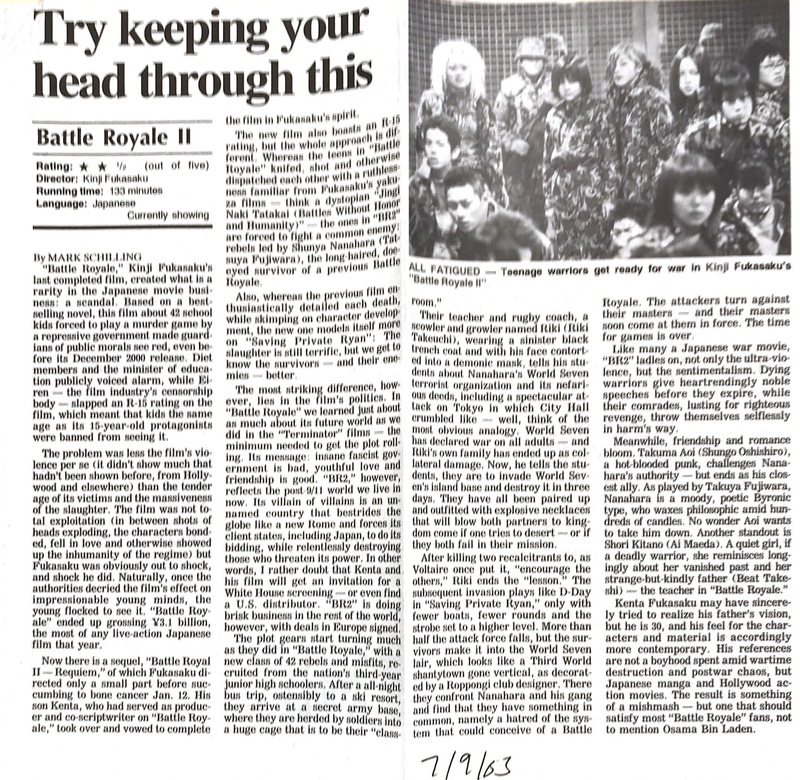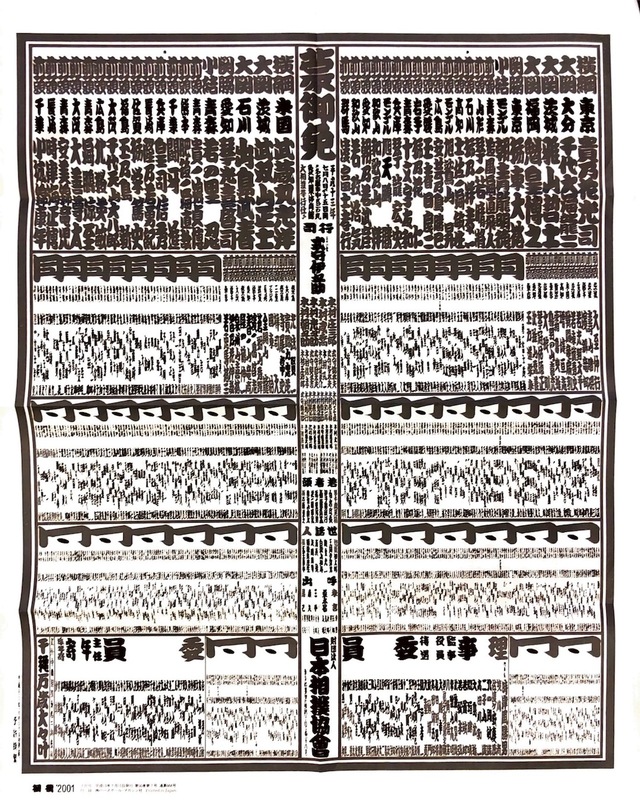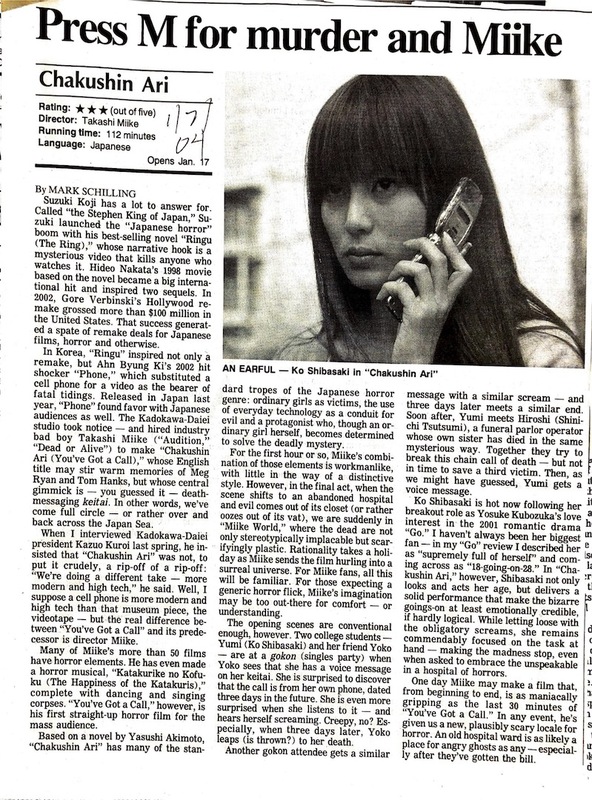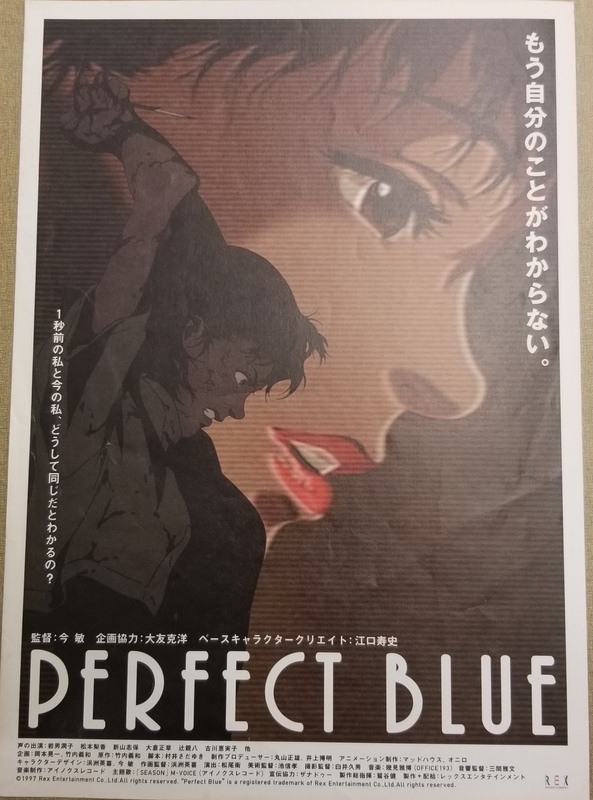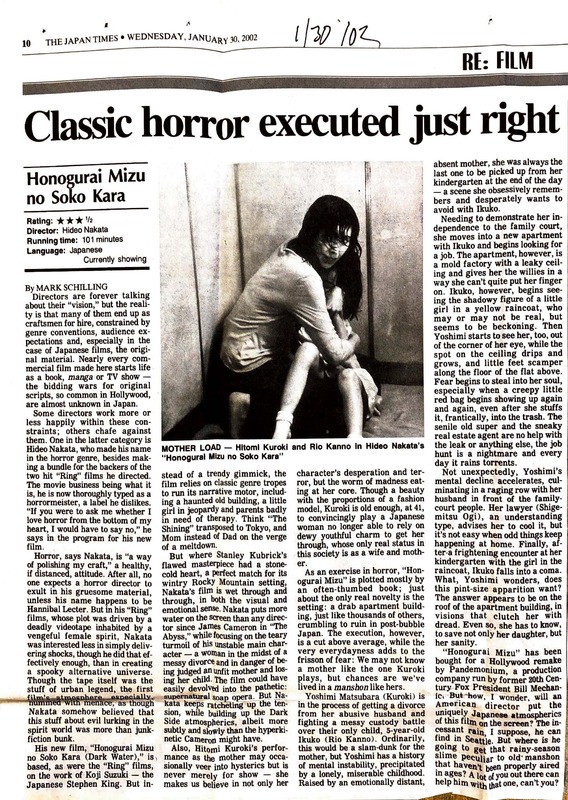The Mark Schilling Collection
Who is Mark Schilling?
Mark Schilling (U-M '73) is the leading English-Language Japanese film critic and journalist and is presently based in Japan. On November 13, 2020, our group had the opportunity to virtually interview Schilling. During the interview, we learned that Schilling's interest in Japanese film began when he watched Akira Kurosawa's 1954 epic Seven Samurai. The film led Schilling to a wider interest in Japanese film, a path which took him to Japan in 1975. At the time, Japanese films were not subtitled, so Schilling had to learn Japanese on his own through watching the unsubtitled films and immersing himself in Japan. He has been reviewing Japanese films at The Japan Times newspaper since 1989 (Smith, 2020).
While there, Schilling met and befriended Donald Richie, a prominent Japanese film scholar, and whom Schilling described as a mentor and influence on his interest in Japanese film. According to Schilling, Kiyoshi Kurosawa's Pulse (2001) is his favorite horror movie.
What is the Mark Schilling Collection?
In creating our archive, we wanted to work with a collection that centered on Japanese horror films. Having access to such a collection would ensure that we would be able to supplement our project with compelling material for a well-rounded and thorough archive. The Mark Schilling collection proved to be perfect for our group to draw from.
The collection is largely unprocessed and contains over 30 boxes of material, spanning multiple decades of Schilling's career. The collection includes promotional material (primarily in Japanese), scripts, production notes, clippings of Schilling's reviews, and more. During our interview with Schilling, we learned that he received the promotional material directly from film distributors, either through mail or in person. Schilling made a great effort to grow the collection; he rarely disposed of material, and purchased film posters dating back to the 1960s. Additionally, Schilling retained clippings of his film reviews.
The collection is comprised of Japanese films of various genres, and contains content pertaining to both the most prominent filmmakers to those who are lesser known. Schilling expressed a wish for his collection to be of interest for fans of Japanese film. Indeed, visitors of the site will find themselves engrossed in sifting through years and years of content, as we did.
Challenges of Working with the Mark Schilling Collection
Due to language barriers, we could not understand much of the material in the collection. In particular, a majority of the promotional material is in Japanese, which prevented us from fully appreciating the content (such as the image to the right). As a result, we perhaps could not incorporate such material into our archive as effectively as we would have hoped. Regardless, we were happy to showcase them.
Collection Highlights
Despite the challenges posed by COVID-19 and virtual learning this semester, our group was able to visit and look through the Schilling Collection several times. At the University of Michigan Department of Film, Television, and Media, we sorted through and scanned select materials. The following are some examples of the content that we selected for our archive.


